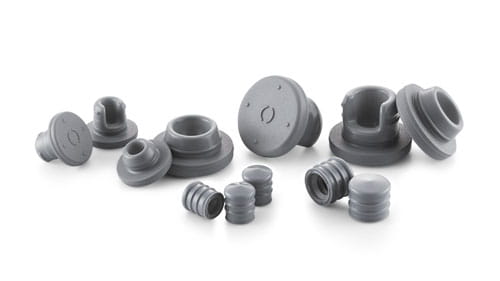Bromobutyl versus Chlorobutyl Rubber: What's the Difference?
The answer is – it depends. Your Technical Customer Service (TCS) representative can help you decide. Butyl rubber, derived synthetically from petrochemicals, is a copolymer of isobutylene, and to a smaller extent, isoprene. Subsequent halogenation results in a halobutyl rubber – typically bromobutyl or chlorobutyl.
![]()

Many modern rubber formulations employed in the pharmaceutical industry for closures (stoppers and plungers), employ halobutyl rubbers as the base. Halobutyl rubbers typically have lower levels of extractables compared to other rubbers, and excellent resistance to permeation by water and oxygen. But, when selecting the most suitable rubber formulation for a stopper or plunger, it must be remembered that the formulation comprises more than just the base rubber - it includes fillers, vulcanizing agents, antioxidants, pigments, etc. The sum of these components, and the manner in which compounding is performed, gives the formulation its properties.
Having the right base rubber, but not having the right additives for the full formulation, will result in poor performance. Having the right formulation, and understanding the needs of the drug product, such as compatibility and long-term stability with the formulation, will help to achieve high performance.
Given the myriad of drug products, and the variety of possible interactions, the best way to select the right rubber formulation for a closure is to discuss the options with a West Technical Customer Support (TCS) expert. West has many offerings – choosing the right one aids in achieving that objective that always is most important – patient safety.
For further information and assistance on selecting the proper formulations and rubber for you drug product please contact West’s Technical Services.




